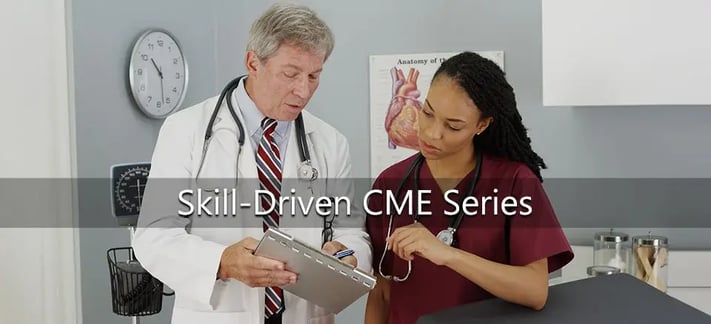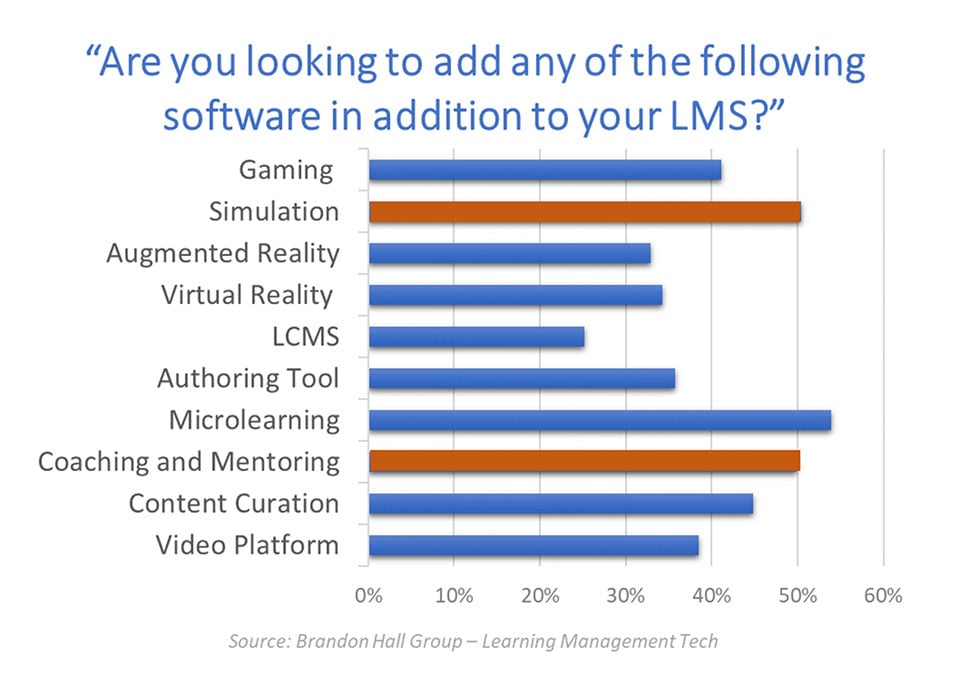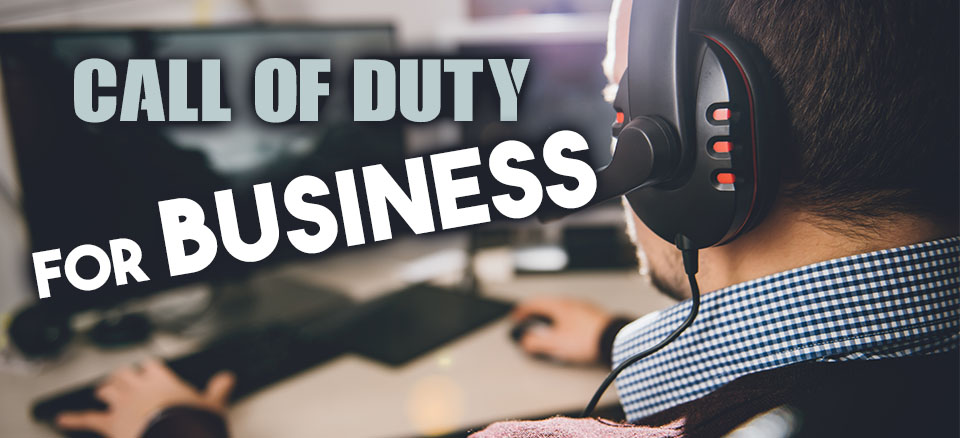
Successful corporate training is all about behavior change. Employees adopt new behaviors that translate into increased performance and better outcomes. Continuing medical education (CME) has strikingly similar goals. In this first skill-driven CME article, we will explore what has, and has not, worked well in corporate training, and apply these insights to CME.
The Parallels between Medical Education and Corporate Training
Corporate training has similar challenges to medical education. New information, processes, protocols, and products are introduced, and corporations need to train their employees to use this knowledge effectively. Traditional corporate training is not much different from CME. It includes, e-learning, virtual instructor-led programs, classroom instruction, subject matter expert webinars, and videos.
As with CME, there are a whole host of ways corporations strive to make training more effective, including interactivity, gamification, and microlearning. With US corporations investing over $80 billion in training, there’s a huge incentive to make these training investments as effective as possible. What can we learn from these efforts? What are the parallels in CME? Let’s explore.
Traditional Corporate Training: Successes and Failures
In my many interactions with corporations, I’ve seen common themes on where their training is struggling to produce results, and where it’s doing well. Before we dive in, we’ll assume that establishing learner motivation is covered, so we can focus on content-specific goals. Let’s start with the success stories, then move on to situations where traditional corporate training tends to fail, and what was done to fix it.
Successful Training
The theme here is that the training content is relatively simple, and using that training on the job is low-risk and straightforward. For example, instead of using “Process A,” we’re moving to a new “Process B.” After the training, employees know what to do, and trying out what they’ve learned is a low-risk proposition.
Failed Training
Here, the outcome is quite different. Training is complete, yet employees are not using what they’ve learned, defaulting instead to their existing behaviors. In these situations, it’s clear that the training isn’t just informational: there are many variables and specific situations that require the training knowledge to be applied differently. Examples include coaching, sales, customer management, and leadership.
In these situations, traditional training does not pull through to increased productivity. Why? Two reasons: One, a lot of nuance is required in considering the interacting variables; and two, the stakes of getting something wrong are high, when the trainee is trying out their new-found knowledge.
EXAMPLE: Consider a manager responsible for coaching their employees using a new performance process. They know the process – at least they scored well on their training posttest. However, it’s a high-stakes endeavor to try out this process while discussing performance with a real employee. In their view, a lot can go horribly wrong if the process doesn’t work as intended. Therefore, the manager resorts to doing what they’ve always done. There’s no meaningful behavior change.
Turning Things Around: How is "Failed" Corporate Training Fixed?
There’s a proven approach that corporate training organizations use to convert this complicated, “failed” training situation into a success.
It starts by diagnosing the problem. Learners don’t know how to apply their knowledge in these nuanced, high stakes situations. They don’t have the skill, so they’re not confident to try. Therefore, the problem is the lack of skill to use new knowledge effectively.
To solve this problem, the trainee needs to practice in a safe environment, and receive coaching feedback, so they can start recognizing “expert” behavior patterns. This is how skills are developed.

How is this done in practice? Running case study webinars, or classes with an expert does not work. It’s not individualized, or personalized. What does work is personalized, one-on-one coaching with a mentor. In these situations, the coach/mentor can put the learner in situations, and coach them on optimal responses. When you think about it, this same skill-based training paradigm applies to athletes, artisans, you, me, and physicians.
As evidence, Bersin & Associates Research surveyed 750 corporations and identified formal and established sales coaching programs as the number one factor (among the top 22 factors) for driving business results.
Here’s the rub though, this proven one-on-one approach to skill development is expensive to scale. Often, there are not enough subject matter experts, and the cost to deploy them is high. That’s why both coaching, and simulation are ranked as two of the top three technology initiatives in corporate training.

Insights for Continuing Medical Education
Similar Issues. Clearly, much of today’s new medical evidence is nuanced, and applying this knowledge with patients is a high-stakes situation. If we use the same traditional training techniques, the same poor results will occur: and they do. We can learn from corporate training solutions.
Good News! Unlike corporate training, medicine has one established clinical process that all physicians are trained on. Therefore, we’re not training learners on a new process, like many corporations must do. Instead, we’re putting clinicians into different “practice” situations and providing mentoring feedback on what to do, and what not to do, as they attempt to apply new medical strategies.
Scaling Skill-Driven CME. Obviously, the proven one-on-on coaching model is not a viable, scalable, approach for CME. Therefore, we need to take advantage of modern immersive technology that emulates this process, like the corporate training industry is doing, using simulation.
Next Up
In this article we explored how corporate organizations use skill-based training to effectively transfer behaviors to the workplace to improve performance, and how we can strive for the same benefits in CME. In the next article, we’ll explore how clinical skill building is different from most CME, and how to successfully build skill-driven CME programs.
About Syandus: Virtual immersive learning technology that transforms knowledge into real-world performance. We immerse participants in realistic virtual situations with one-on-one expert coaching that gives them experience making optimal decisions. Syandus Learning Modules combine cognitive science principles, the realism of game technology, and our customer’s proprietary content, to deliver rapid skill acquisition. Modules are cloud-based for easy deployment, fully trackable with embedded analytics, and can be used on any web-enabled device.



